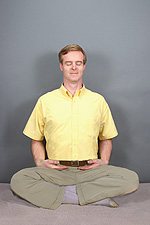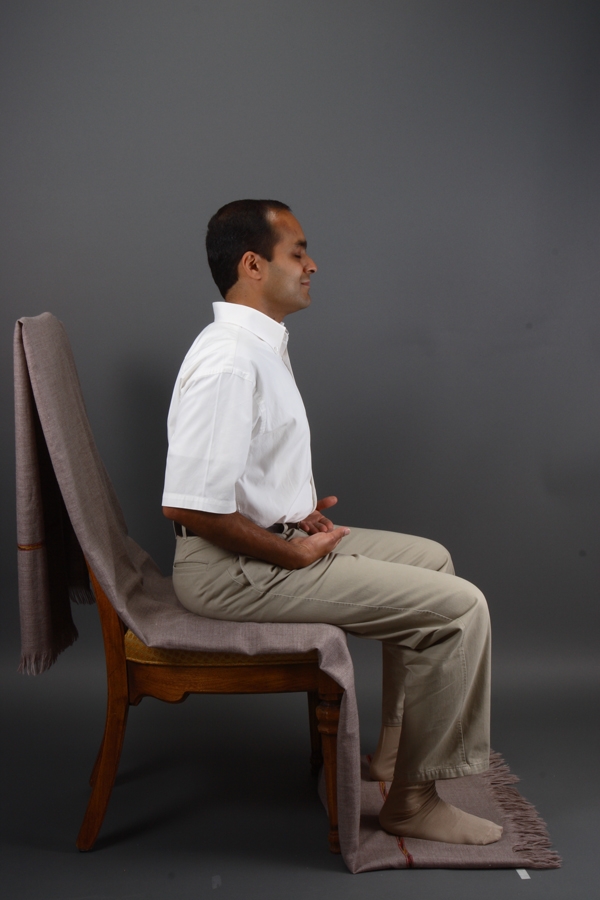Correct Posture for Meditation – Yogananda
Posture
Instructions on Posture for Effective Meditation
Erect Spine
One of the first requisites for meditation is correct posture. The spine should be erect. When the devotee is seeking to direct his mind and life force upward through the cerebrospinal axis to the centers of higher consciousness in the brain, he should avoid stricture or pinching of the spinal nerves caused by improper posture.
Simple cross-legged meditation posture
Correct Posture
Those persons whose legs are supple may prefer to meditate sitting cross-legged on a cushion on the floor, or on a firm bed.

However, Paramahansa Yogananda recommended the following meditation pose:
Sit on a Straight Armless Chair

Sit on a straight armless chair with the feet resting flat on the floor. Hold spine erect, abdomen in, chest out, shoulders back, chin parallel to the ground. The hands, with palms upturned, should rest on the legs at the juncture of the thighs and the abdominal region to prevent the body from bending forward.
If the correct posture has been assumed, the body will be stable yet relaxed, so that it is easily possible to remain completely still, without moving a muscle.
Now, close your eyes and gently lift your gaze upward, without straining, to the point between the eyebrows — the seat of concentration, and of the spiritual eye of divine perception.
From the writings of Paramahansa Yogananda:
“If the beginner yogi sits on the hard floor to meditate he will find his legs going to sleep, owing to pressure on his flesh and arteries. If he sits on a blanket over a spring pad or mattress, on the floor, or over a hard bed, he will not experience discomfort in his legs. A Westerner, used to sitting on chairs with his thighs at a right angle to his torso, will find it more comfortable to meditate on a chair with a woolen blanket and silk cloth under him, extending under his feet which rest on the floor. Those Western yogis, especially youths, who can squat on the floor like Orientals, will find their knees pliable, owing to their ability to fold their legs in an acute angle. Such yogis may meditate in the lotus posture, or in the more simple cross-legged position.
“No one should try to meditate in the lotus posture unless he is at ease in that position. To meditate in a strained posture keeps the mind on the discomfort of the body. Meditation should ordinarily be practiced in a sitting position. Obviously, in a standing posture (unless one is advanced) he may fall down when the mind becomes interiorized. Neither should the yogi meditate lying down, for he might resort to the ‘practiced’ state of slumber.
“The proper bodily posture, one which produces calmness in body and mind, is necessary to help the yogi shift his mind from matter to Spirit.”
Source: http://www.yogananda-srf.org/

No Comments Yet